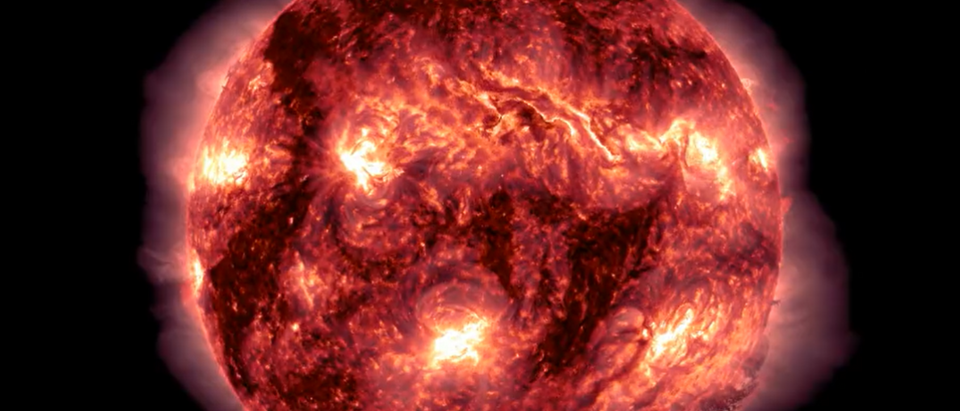Solar winds from a snapping “canyon of fire” filament are set to slam into Earth, causing at least a weak G1 geomagnetic storm Thursday.
Sun watchers spotted a range of solar filaments in early July, which subsequently erupted, carving a 238,880 mile long and 12,400 mile deep “canyon of fire” on our closest star, Space Weather reported. The canyon is spewing solar material directly at Earth, according to LiveScience.
The long snake-like filament cartwheeled its way off the #Sun in a stunning ballet. The magnetic orientation of this Earth-directed #solarstorm is going to tough to predict. G2-level (possibly G3) conditions may occur if the magnetic field of this storm is oriented southward! pic.twitter.com/SNAZGMmqzi
— Dr. Tamitha Skov (@TamithaSkov) July 16, 2022
Solar filaments are arcs of electrified gas (also known as plasma) that travel along the sun’s atmosphere, following the star’s magnetic field, LiveScience explained. The filaments are volatile, and they launch explosive jets of solar wind (coronal mass ejections) toward Earth when they collapse, the outlet continued.
The latest ejection from the filaments is expected to hit Earth on July 21, LiveScience continued. Planets, like Earth, that have strong magnetic fields absorb the solar debris, often triggering geomagnetic storms, the outlet continued. (RELATED: ‘Potentially Hazardous’ Asteroid To Skim Past Earth)
Throughout the storms, waves of very energetic particles compress our planet’s magnetic field slightly, LiveScience reported. The G1 magnetic storm expected Thursday is supposed to be a weak one, but it could still potentially impact fluctuations in the power grids and satellites that control our mobile devices, LiveScience continued.
Extreme geomagnetic storms have the potential to knock satellites out of the sky, just like one did back in February to 40 different SpaceX machines, LiveScience reported in another article. They also have the potential to cripple all internet communications, something scientists attempted to warm the public about in 2021, the outlet wrote at the time.
Human ‘Hobbit’ Ancestor Might Still Exist Today, New Book Claimshttps://t.co/gDtsi8JNPf
— Daily Caller (@DailyCaller) April 27, 2022
Scientists believe the largest solar storm witnessed in modern history occurred in 1859, which released about the same amount of energy as 10 billion 1-megaton atomic bombs and caused aurora borealis (also known as the northern lights) as far as the Caribbean, LiveScience reported. Known as the “Carrington Event,” the storm electrocuted telegraph systems across the world, the outlet noted.


